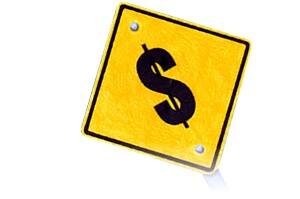Bank Fees Survey Mid-2012 – Checking and ATM Costs Jump Again

Read the current Bank Fees Survey
Nearly any way you slice it, checking accounts became a little more expensive in the first half of 2012.
That’s the principal finding of the latest MoneyRates Bank Fees Survey, a semi-annual study that examines banking costs across the country to reveal trends in checking account and ATM charges. The latest data, which MoneyRates collected in July, suggest that the fee environment worsened for bank customers in virtually every way possible in the first half of the year.
However, the results also indicate that consumers still have several options for combating these costs. The following are some notable trends in bank fees — and what consumers can do about them.
Checking fees rise across the board
Compared to the end-of-year 2011 Bank Fees Survey, average checking account fees rose in every major category tracked:
- Minimum required to open an account. The average amount required to open a checking account was $408.76 in this survey, up from $391.41 in the previous. The higher this minimum becomes, the more poorer customers may be forced to go unbanked.
- Monthly service fees. Among banks that charge a monthly fee, the average cost was $12.08, up from $11.28. At a total of nearly $145 per year, these monthly maintenance fees can take a serious bite out of your account balance.
- Minimum balance for fee waiver. Banks will often waive the monthly fee for customers with more on deposit, but the amount you have to keep in your account to get this waiver is going up. The data show an average of $4,446.57 to get a monthly fee waived, up from $3,590.83.
- Overdraft fees. Overdraft fees jumped to an average of $29.83, up from $29.23.
- Percentage of accounts offering free checking. Contrary to many reports, free checking is not dead, but it is becoming more scarce. Only 35.3 percent of the accounts surveyed were free of a monthly maintenance fee, down from 38.8 percent.
- ATM fees. ATM fees also increased, both for bank customers using out-of-network machines and for non-customers using a bank’s ATM.
Previous surveys have tended to show more of a mixed bag, with some fees rising and others falling. But the latest survey shows a comprehensive trend toward checking accounts becoming more expensive.
Differences by size and type of bank
While the trend toward higher fees seems decisive, it is by no means universal. The average fees in the survey varied widely between different sizes and types of banks.
The average monthly maintenance fee was $13.88 at large banks (those with more than $25 billion in deposits), while it was only $9.87 at small banks (those with less than $5 billion in deposits). At medium-sized banks, the average monthly maintenance fee fit in between at $11.17. The average minimums to open an account and to qualify for a fee waiver were higher among the large banks surveyed too.
The results also indicate that small banks are much more likely to offer free checking. There was no monthly maintenance fee at 45.8 percent of the accounts at small banks in the survey, whereas only 21 percent of the accounts at large banks were free of those fees.
Fee structures also differed greatly between primarily online banks and traditional branch-based institutions. Two-thirds of online checking accounts were free of monthly maintenance fees, compared to just 34 percent of those offered by traditional banks. The online banks that do charge monthly fees also tended to charge lower amounts than traditional banks, and their average account minimums, overdraft fees and ATM fees were lower too.
How to beat rising bank fees
Here are four tips to help you avoid the jump in charges:
- Shop around. There is a huge variation in bank fees, so shopping around can make a big difference. Over a third of checking accounts still do not charge a monthly maintenance fee, which can save you hundreds of dollars each year.
- Consider an online bank. Given the clear cost advantage of online banks in the survey, switching to one may offer much-needed relief if you are fed up with fees.
- Think small. If you don’t want to bank online, you may want to focus on smaller banks, since they offered several price advantages over their larger counterparts in this survey.
- Match your needs with a bank’s fees. When comparing banks, consider your banking habits. For example, if you have a tendency to overdraft your account, the size of overdraft fees may matter more than monthly maintenance fees.
While this survey suggests a clear pattern toward rising fees, you can still buck this trend by doing your research. Comparing fee disclosures takes some work, but when it leads to saving month after month, the effort is likely to prove worth it.
Methodology
To track these trends, the Bank Fees Survey uses the MoneyRates Index, which includes the 50 largest banks in the U.S. plus a similar number of smaller banks. This sampling is meant to be representative of the national banking environment.